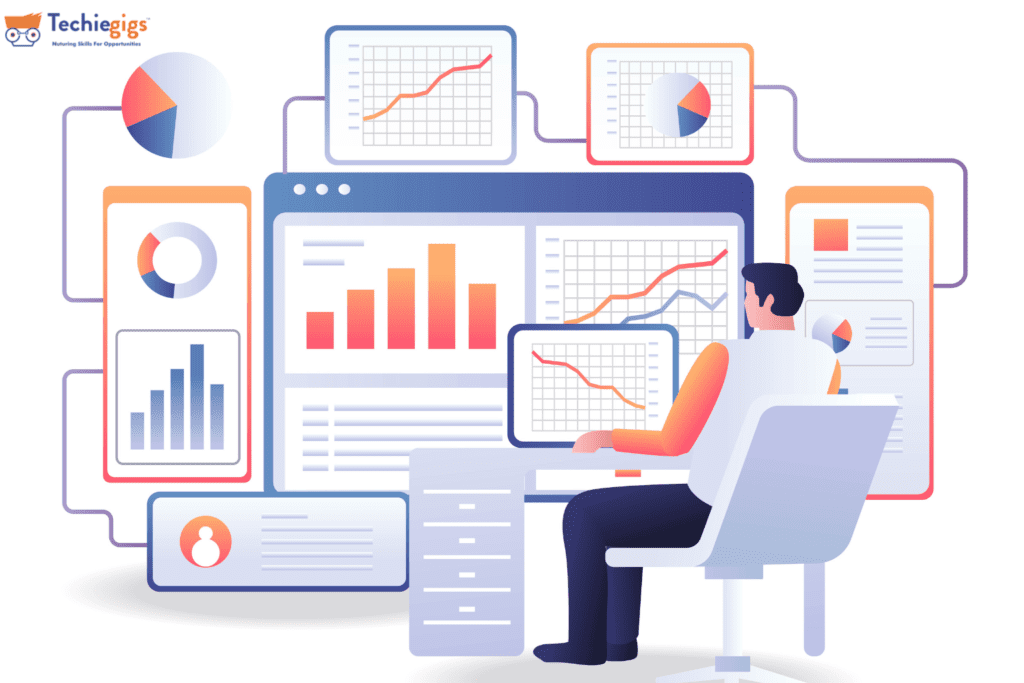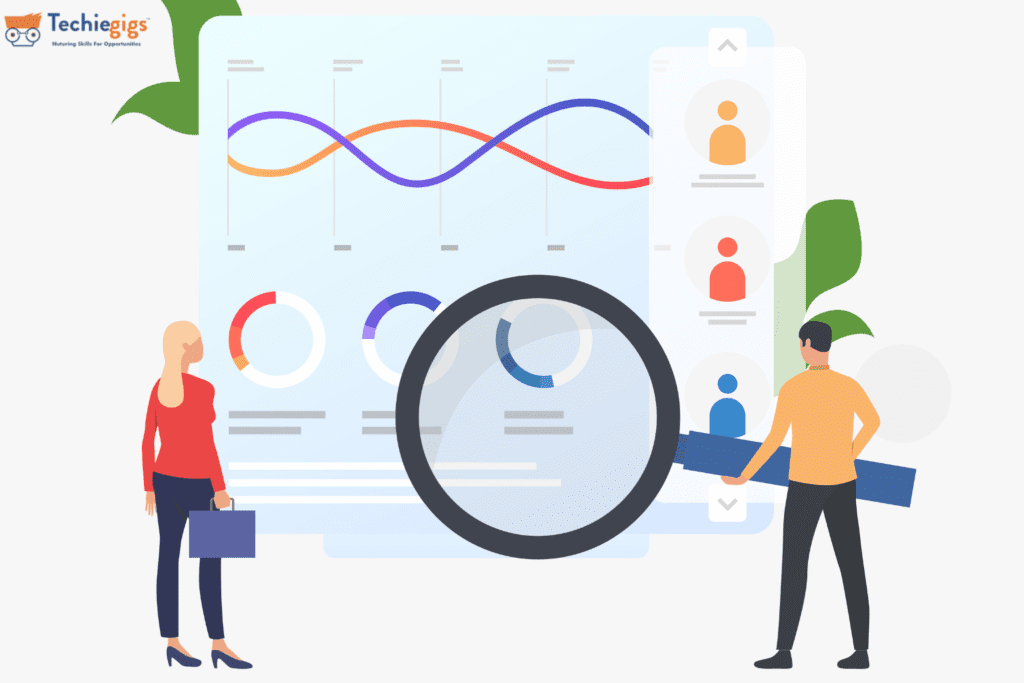The Role of Data Analytics in Digital Marketing: How to Make Data-driven Decisions
In today’s digital age, data is considered as the new oil. The world produces an enormous amount of data daily. Organisations that can extract meaningful insights from this data are better positioned to make informed decisions and stay ahead of the competition.
In the field of digital marketing, data analytics plays a vital role in understanding consumer behaviour, improving marketing campaigns, and driving business growth. In this blog post, we will explore the role of data analytics in digital marketing and how businesses can use data-driven decision-making to achieve their marketing goals.
Table of Content
What is Data Analytics in Digital Marketing?
Data analytics in digital marketing refers to the process of collecting, analyzing, and interpreting data from various digital marketing channels such as social media, website traffic, email marketing, and mobile apps. Data analytics aims to identify patterns and trends in consumer behaviour, measure the effectiveness of marketing campaigns, and gain insights that can help businesses make informed decisions.

Why is Data Analytics Important in Digital Marketing?
Data analytics is important in digital marketing for several reasons. First, it allows businesses to understand their target audience better. By analyzing data on consumer behaviour, businesses can gain insights into their customers’ preferences, needs, and buying patterns. This information can help businesses tailor their marketing campaigns to reach their target audience and improve the overall customer experience.
Second, data analytics allows businesses to measure the effectiveness of their marketing campaigns. By tracking metrics such as click-through, conversion, and engagement rates, businesses can determine which marketing channels and tactics are working and which are not. This information can help businesses optimize their marketing campaigns to improve their return on investment (ROI).
Finally, data analytics can help businesses identify new growth opportunities. By analyzing data on market trends, consumer behaviour, and competitor activity, businesses can identify new markets, develop new products or services, and improve their overall business strategy.
How to Make Data-driven Decisions in Digital Marketing?
Making data-driven decisions in digital marketing involves several steps. Let’s take a closer look at each of these steps.
Step 1: Define Your Goals and Objectives
Defining goals and objectives is the foundation of any successful marketing campaign. With clear goals and objectives, it is possible to measure the effectiveness of your marketing efforts. Therefore, the first step in making data-driven decisions in digital marketing is to define your goals and objectives.

When defining your goals and objectives, it is important to consider what you are trying to achieve with your marketing campaigns. Are you looking to increase brand awareness, generate leads, or drive sales? Each of these goals requires a different marketing approach, so it is important to define your goals upfront.
Defining your goals and objectives upfront ensures that your data analytics efforts are focused on the metrics that matter most to your business. It also helps you stay on track and measure progress toward your goals. Without clear goals and objectives, it is easy to get sidetracked or lose focus on what you are trying to achieve with your marketing campaigns.
Step 2: Identify Key Performance Indicators (KPIs)
Once you have defined your goals and objectives, the next step is to identify the key performance indicators (KPIs) that will help you measure progress toward those goals.KPIs are metrics that are directly tied to your goals and objectives. They clearly understand how well your marketing campaigns are performing and whether they are on track to achieve your goals.

When identifying KPIs, it is important to consider which metrics are most relevant to your goals and objectives. For example, if your goal is to increase website traffic, your KPI might be website sessions or pageviews. If your goal is to generate leads, your KPI might be the number of leads generated or the conversion rate.
It is essential to prioritize KPIs that are measurable and actionable. This means that you should choose easily quantifiable KPIs and provide insights that you can act upon to improve your marketing campaigns. For instance, if your KPI is website sessions, you may need to focus on improving your website content, SEO, and digital advertising to increase website traffic.
Step 3: Collect and Analyze Data
With your goals, objectives, and KPIs defined, the next step is to collect and analyze data. This involves gathering data from various digital marketing channels such as social media, website traffic, email marketing, and mobile apps. Once you have collected this data, you can use data analytics tools to analyze it and identify patterns and trends.

To collect data, you can use various tools such as Google Analytics, social media analytics, email marketing software, and mobile analytics tools. These tools provide valuable insights into consumer behaviour, such as which pages on your website are the most popular, which social media channels drive the most traffic, and which email campaigns have the highest open and click-through rates.
Once you have collected the data, the next step is to analyze it using data analytics tools. Data analytics tools enable you to identify patterns and trends in your data, such as website traffic changes over time or consumer behaviour variations across different demographics.
By analyzing your data, you can identify areas where your marketing campaigns are performing well and areas that need improvement. This enables you to make data-driven decisions and optimize your marketing strategy for better results.
Step 4: Draw Insights and Make Recommendations
After analyzing the data, the next step is to draw insights and make recommendations based on those insights. This involves identifying areas where you can improve your marketing campaigns and making recommendations on how to do so.

When drawing insights from the data analysis, it is important to look for patterns and trends that can inform your marketing strategy. For example, you might identify that specific social media channels are more effective at driving traffic to your website than others. Or, email campaigns with a certain subject line perform better than others.
When making recommendations, it is important to prioritize the areas that will significantly impact your goals and objectives. For example, if your goal is to increase leads, you might prioritize recommendations that will help increase website traffic or improve the conversion rate.
Moreover, ensuring that your recommendations are actionable and feasible is essential. This means that you should consider factors such as budget, resources, and timeline when making recommendations.
Step 5: Test and Refine
The final step in making data-driven decisions in digital marketing is to test and refine your marketing campaigns. Testing involves implementing changes to your marketing campaigns based on the recommendations drawn from your data analysis and evaluating the results. Refining involves further adjusting your marketing campaigns based on the test results.

Testing is essential to determine whether your recommendations will positively impact your marketing campaigns. For example, if you recommend improving your website design to increase website traffic, you must test whether the design changes result in increased traffic. You could conduct A/B testing, creating two landing page or email campaign versions and measuring which performs better.
Once you have tested your marketing campaigns, the next step is to refine them based on the test results. For example, if your A/B testing shows that version A of your landing page performed better than version B, you would refine your marketing campaign by implementing version A across your website.
Testing and refining can also help businesses identify new growth opportunities. For example, suppose your testing reveals that a particular social media channel drives more traffic than others. In that case, you might explore new ways to leverage that channel and expand your reach.
Conclusion
Data analytics plays a critical role in digital marketing. By collecting, analyzing, and interpreting data, businesses can gain valuable insights into consumer behaviour, measure the effectiveness of their marketing campaigns, and identify new growth opportunities. To make data-driven decisions in digital marketing, businesses must define their goals and objectives, identify key performance indicators, collect and analyze data, draw insights and make recommendations, and test and refine their marketing campaigns. By using data analytics to inform their marketing strategies, businesses can stay ahead of the competition and achieve their marketing goals more effectively.








